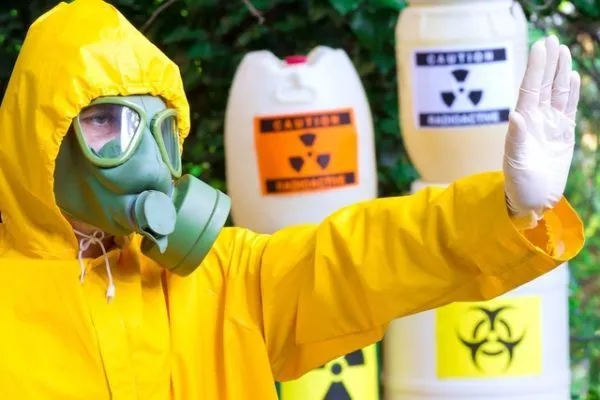Radiation is a type of energy that spreads in the environment at different speeds, which can penetrate some materials and be absorbed by the skin and in some cases, it can be harmful to health, causing diseases such as cancer.
The main types of radiation are solar, ionizing, and non-ionizing, and in each of these types, the energy can be produced by industries or found in nature.

Types of radiation and how to protect yourself
Radiation can be classified into three types, such as:
1. Solar radiation
Solar radiation, also known as ultraviolet radiation, is emitted by the sun and ultraviolet rays can be of various types, such as:
- UVA rays: they are weaker, as they have less energy and cause superficial damage to the skin, such as wrinkles;
- UVB rays: they are stronger rays and can damage skin cells more, causing burns and some types of cancer;
- UVC rays: it is the strongest type, but does not reach the skin, as they are protected by the ozone layer.
The solar radiation reaches the skin with greater intensity between the hours of 10 am and 4 pm, but even in the shade people can be exposed to ultraviolet rays.
Prolonged sun exposure can cause sunburn and heatstroke, which is when dehydration, fever, vomiting, and even fainting occur. In addition, excessive exposure to ultraviolet rays can lead to the appearance of skin cancer that causes wounds, warts, or skin blemishes.
How to protect yourself: the best way to protect yourself from ultraviolet radiation is to use a daily sunscreen with a minimum of protection factor 30, to wear hats to protect your face from ultraviolet rays and to avoid tanning. And yet, it is important to avoid the sun in the middle of the day, when the radiation intensity is greatest.
2. Ionizing radiation
Ionizing radiation is a type of high-frequency energy produced in power plants, which is used in radiotherapy devices and in imaging tests, such as computed tomography.
Exposure to this type of radiation should be minimal, as people who are exposed to it for a long time, may develop some health problems, such as nausea, vomiting, weakness and burns on the skin and in more severe cases the manifestation of some type of cancer.
How to protect yourself: the performance of tests that emit ionizing radiation, must be performed with medical indication, and, in most cases, they do not cause any health problem, as they are usually fast.
However, professionals who are exposed to this type of radiation for a long time, such as employees working in the radiotherapy sector and employees of nuclear power plants, should use radiation dosimeters and protective equipment, such as a lead vest.
3. Non-ionizing radiation
Non-ionizing radiation is a type of low-frequency energy that spreads through electromagnetic waves and may come from natural or unnatural sources. Some examples of this type of radiation are waves emitted by radios, cell phones, TV antennas, electric lights, wi-fi networks, microwaves, and other electronic equipment.
Generally, non-ionizing radiation does not cause any harm to health because it carries little energy, however, people who work with electrical systems, such as electricians and welders, are at risk of having an accident and receiving a very high energy load and may have burns on the body.
How to protect yourself: non-ionizing radiation does not cause serious illness so there is no need for specific protective measures. However, workers who are in direct contact with power cables and generators should use personal protective equipment to prevent accidents from occurring.
